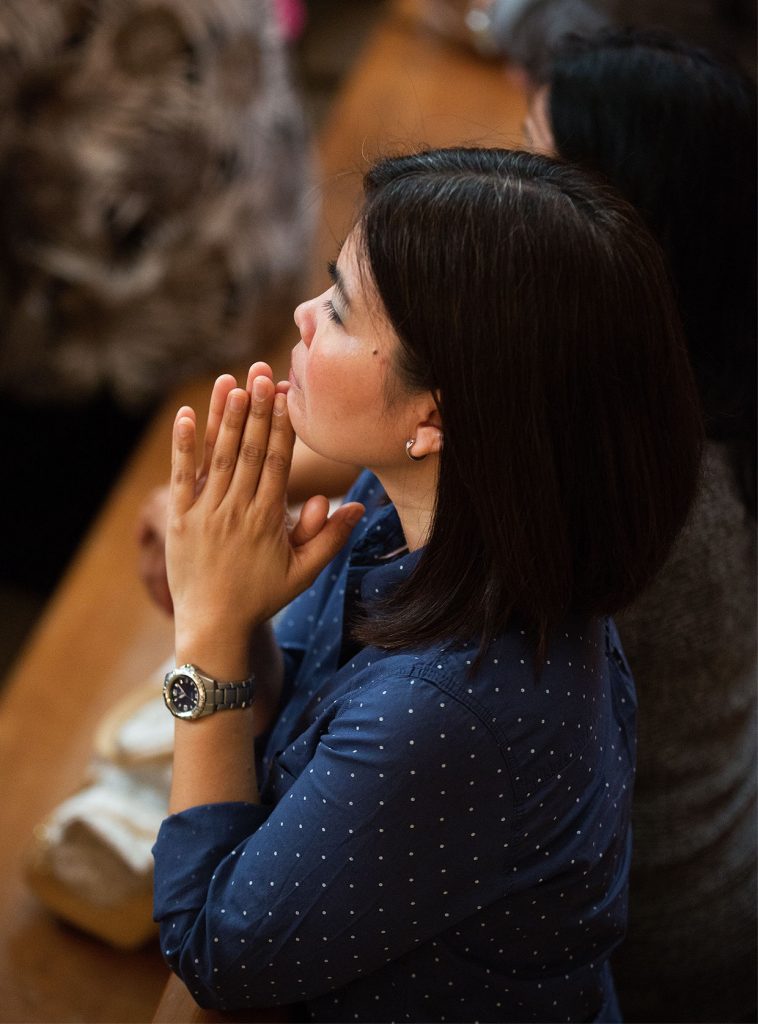We are rejoicing this week with our Salvadoran brothers and sisters for the beatification of Archbishop Oscar Romero.
His beatification shows us again that the Americas are a land of holiness and a land of saints. And his witness reminds us that we are all called to be “saints of the Americas.”
I think we know that God calls us to holiness, to grow in our love for him and our love for one another. The challenge for us is always “how” to do it. How do we grow in holiness? What steps do we need to take?
I’ve found myself thinking a lot about this during these past seven weeks of Easter, which ended on Sunday with the “birthday” of the Church on the great feast of Pentecost.
The Church was born to make men and women holy. Sometimes we can forget that.
We know the Church is missionary. We know the Church exists to spread the good news of Jesus to the ends of the earth.
But the Church is also the family of God. In fact, the Church’s mission is to grow this family of God — so that all peoples know that they are children of God and brothers and sisters.
Like every good family, the Church nurtures and cares for her children, forming and shaping them and giving them what they need to grow and thrive.
This is one way to understand the Church’s sacraments, prayers, teachings, devotions, and works of charity and mercy. These are the ordinary “means” that the Church uses to sanctify her children — to help us grow in holiness and help us to live the life of love that God intends for us.
As we enter these summer months, I think it would be good for us to talk in this column about God’s plan for our lives and about some of the ways the Church helps us to travel the path of holiness and grow in our relationship with God.
A great place to start is to reflect on what we do every Sunday. There is a deep inner logic to the Church’s liturgical year — and a great spiritual power.
It begins with Advent. In Advent we wait — as the world once waited, as every heart still waits — for the coming of God.
The hope of Advent is fulfilled in Christmas, as we celebrate the mystery of the Incarnation — the Son of God coming to share our humanity so we can share his divinity as sons and daughters of God.
With Christ’s “manifestation” at the Epiphany and the celebration of his baptism, we then enter into a period called “Ordinary Time.”
His baptism begins his public mission. And the point of “Ordinary Time” is that our baptism is meant to begin our mission as his disciples and as children of God. And we carry out that mission by following Jesus in our own ordinary daily lives.
So in the liturgies during this time, we follow Jesus. We witness the drama of his mission as it unfolds — all his miracles, teachings and encounters with people.
We journey with Jesus for several weeks. Then the Church calls us to contemplate Christ’s paschal mystery — how and why he suffered, died and rose from the dead for our redemption. This is Lent, a season of repentance in which we prepare to make a new conversion and renew our baptismal promises at Easter.
Easter is a 50-day feast of joy for the Resurrection. In the liturgy, we share the experience of the first apostles, spending these days in the company of the Risen Lord. On the 40th day, we witness his Ascension into heaven. Ten days later, we receive the gift of his Holy Spirit at Pentecost.
With the gift of the Spirit, we return once more to “Ordinary Time.”
In the Church’s liturgy in these coming months, we continue to follow Jesus in his public ministry until we reach the final days of his teaching about the kingdom to come. We end the year by celebrating the truth he has revealed — that he is the Christ, the King of the Universe.
Then the very next Sunday, another Advent begins and the cycle continues.
As we follow Jesus in the Church’s liturgy, week by week, we are being “changed” by our encounter with Christ. As we reflect on the mysteries of Jesus, we come to see our lives in the light of his. We see the world with his heart and mind, we feel his presence walking with us in our daily lives.
So let’s pray for one another this week.
And let us ask our Mother Mary to help us to really live the liturgical year — so that we may grow in holiness and in the image and likeness of Jesus.

